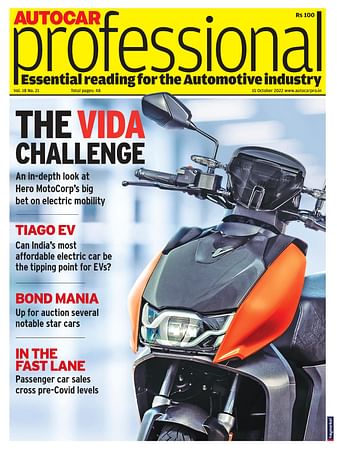Volkswagen opens new wind tunnel efficiency centre in Wolfsburg
Vehicles can be tested at wind speeds of up to 250kph, simulating real traffic conditions with a view to reducing drag, fuel consumption and emissions. Can also replicate climatic conditions between -30degC and +60degC.
Volkswagen has opened a new Wind Tunnel Efficiency Centre in Wolfsburg, one of the most modern and efficient in the industry. The foundation stone for the centre was laid in June 2014.
The facility, with a floor area of 8,800 square metres, is also certified for measurements in accordance with WLTP (Worldwide Harmonized Light Vehicle Test Procedures). Vehicles can be tested at wind speeds of up to 250kph, simulating real traffic conditions with a view to reducing drag, fuel consumption and emissions. In addition, driving simulations under all the climatic and environmental conditions normally experienced throughout the world can be conducted – at temperatures between -30degC and +60degC.
Dr Herbert Diess, CEO of the Volkswagen brand, says: "By 2020, we will renew our entire product portfolio as well as expanding it in key segments. All in all, our development teams are working on more than 50 vehicle projects."
Commenting on aerodynamic testing, Dr. Frank Welsch, Board Member for Technical Development, says: "These tests are a key factor in improving efficiency and reducing emissions. Thanks to the new center, we are also outstandingly well positioned for the future with respect to other development areas such as aeroacoustics and electric vehicle range."
In the aerodynamics and acoustics wind tunnel, especially the flat belt balance ensures that real-world driving operation can be simulated. Each individual wheel of the vehicle is positioned on its own flat belt. This allows turning motions of the wheels in a way, which is similar to driving on the road. The balance, with integrated camera system, aligns each model tested fully automatically in less than five minutes. The previous system required about 30 minutes.
Volkswagen says the acoustic insulation of the tunnel makes it one of the quietest automotive wind tunnels in the world. At a wind speed of 160kph, the tunnel only reaches a sound pressure level of 65 decibels, comparable with TV operated at a reasonable volume or normal speech.
The thermal wind tunnel, which will be able to simulate snow in addition to rain and sunlight following a pilot phase, will allow significantly more real-life tests than its predecessor. The main component of the tunnel is a highly advanced all-wheel-drive roller dynamometer, which also meets all the requirements for road tests.
With the new centre, Volkswagen will significantly reduce the cost of tests previously carried out in remote areas. In addition, cooperation between development areas such as vehicle safety, design, acoustics and comfort will be facilitated as a result of the shorter distances involved; this also applies to the central workshop area.
Wind tunnels are still essential for homologation and a wide variety of detailed improvements to vehicles. For example, an aerodynamic drag value can be determined in about 20 minutes. A computer calculation would take days.
RELATED ARTICLES
Sept 2024 From R&D incentives to EV infrastructure: What auto components industry expects from Budget 2024
Sept 2024 From R&D incentives to EV infrastructure: What auto components industry expects from Budget 2024
US car majors hit the brakes on driverless cars
Ford Motor and Volkswagen to close self-driving startup Argo AI, due to lack of technology and clear regulations.
Autoliv and Geely to develop advanced safety tech for future vehicles
Scope of cooperation includes safety for high-level autonomous driving, intelligent steering wheel technology, a 360deg ...






 By Autocar Pro News Desk
By Autocar Pro News Desk
 07 Nov 2017
07 Nov 2017
 4014 Views
4014 Views









